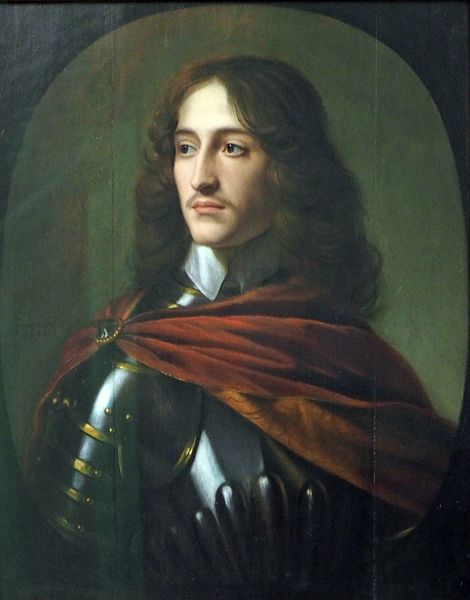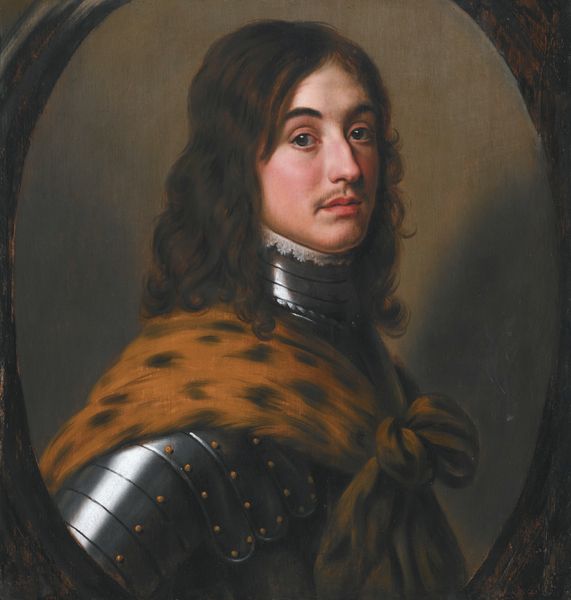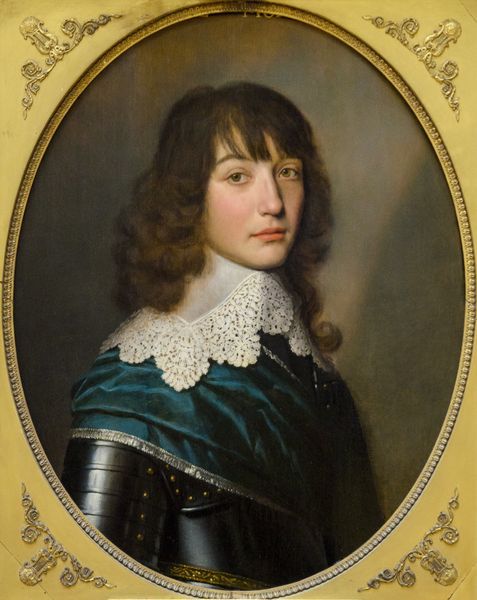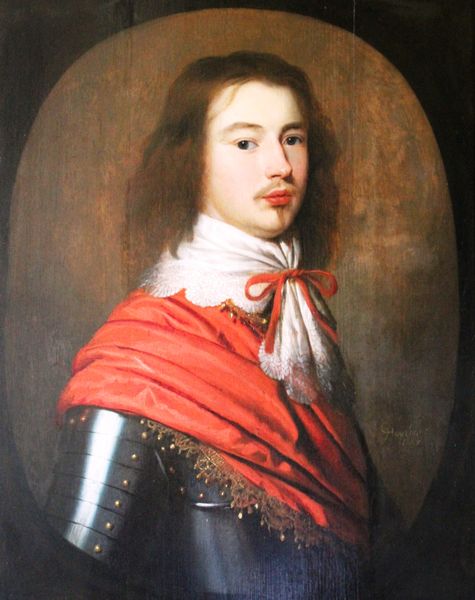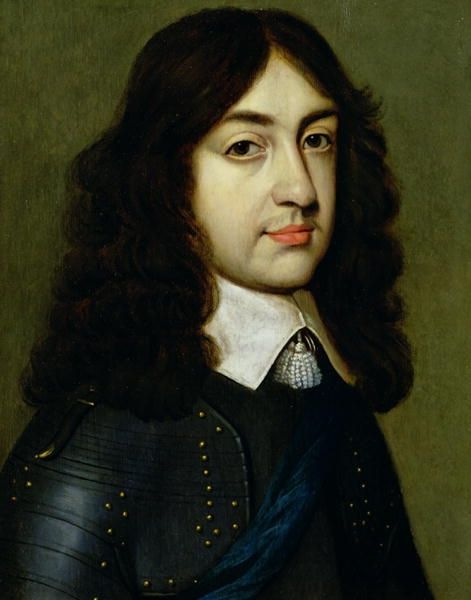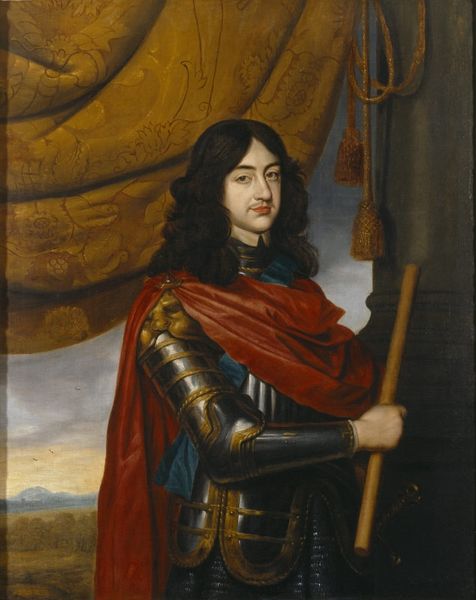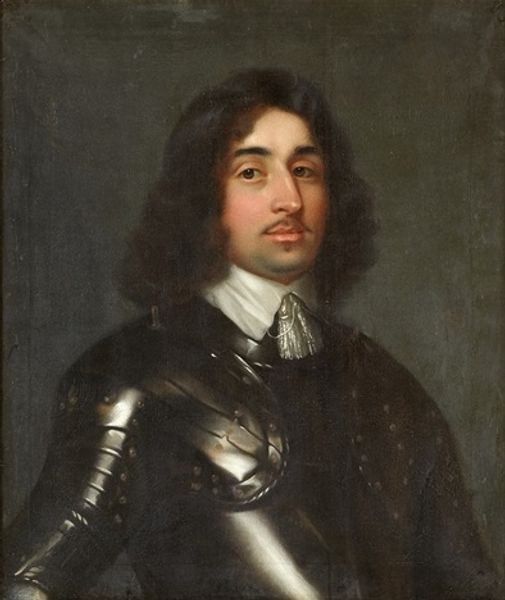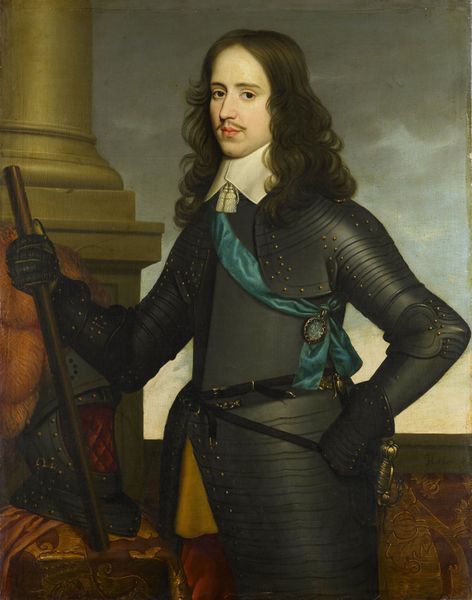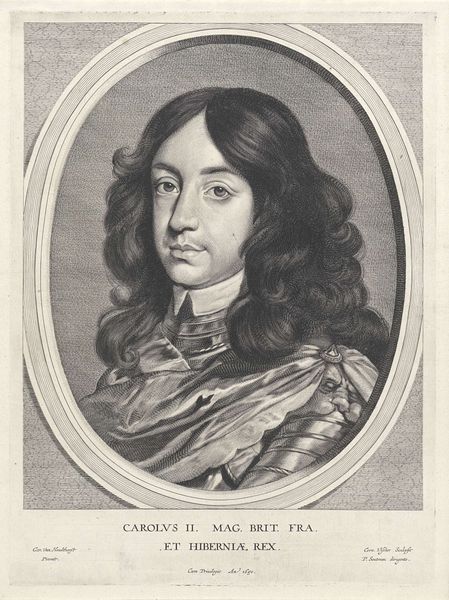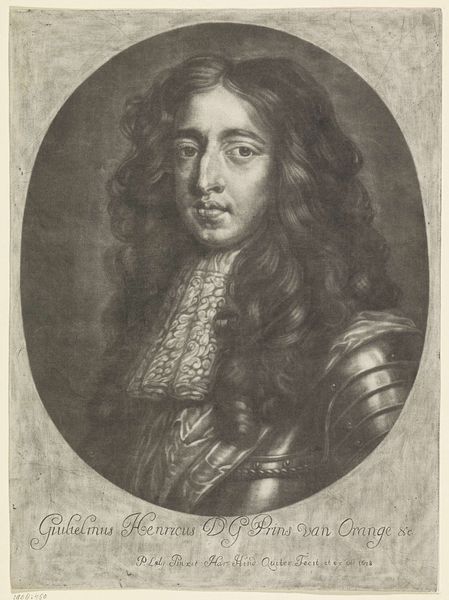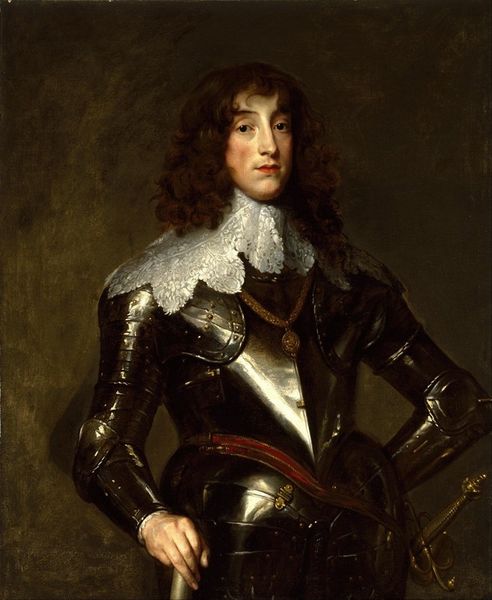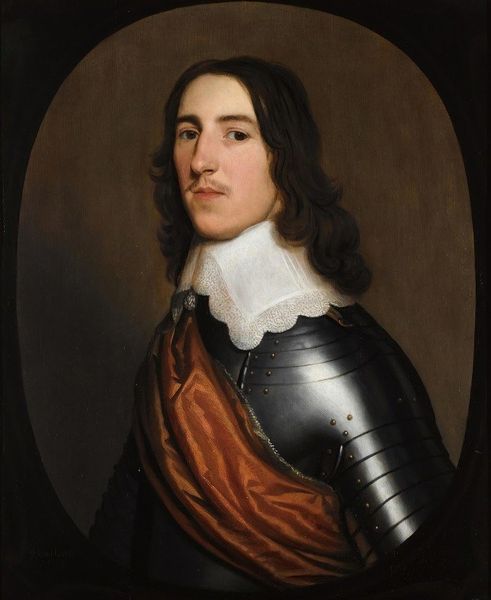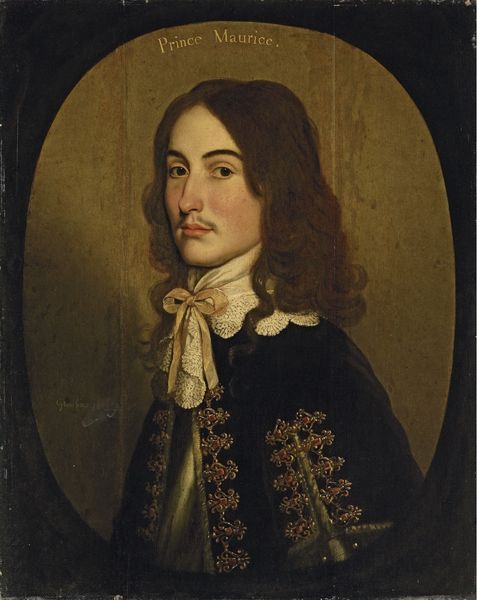
oil-paint
#
portrait
#
baroque
#
oil-paint
#
oil painting
#
history-painting
Copyright: Public domain
Gerard van Honthorst painted this portrait of Prince Rupert of the Rhine, likely in the 1630s, using oil on canvas. It speaks to the social and political climate of 17th-century Europe, particularly the role of nobility and the visual codes associated with power. The image presents Rupert, a member of the European aristocracy, in a manner befitting his status. The armor and sash allude to his military prowess and noble lineage. During this time, portraits were tools for constructing identity and communicating social standing. Honthorst, a Dutch artist who spent time in Rome, was known for his skill in capturing light and texture, which he employs here to enhance the subject’s presence. To fully understand this painting, it’s essential to consider the history of portraiture and the conventions of aristocratic representation in 17th-century Europe. This might involve researching costume, heraldry, and the social function of portraiture in different countries and courts. Understanding it’s social and institutional context will allows us to grasp the subtle negotiations of power and identity that the image conveys.
Comments
No comments
Be the first to comment and join the conversation on the ultimate creative platform.
